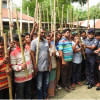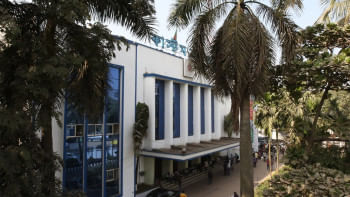Stop ignoring militancy threats in prisons

A recent police intelligence report has confirmed what we have been warning about in this column for years: militants in prisons, far from being rehabilitated and deradicalised, are continuing their communications with members of militant outfits outside of prisons, possibly gathering strength and reorganising. This indicates that the soft power approach being pursued by the authorities in prisons are not working at all.
Militants in prison, like all other prisoners, need to be rehabilitated and shown a better path. But because of the way our prisons are presently operating—with prisoners crammed beyond prison limits, inadequate resources allocated for them and very little focus on their rehabilitation—they are doing the exact opposite. Only a year ago, this newspaper reported on how militant leaders have been taking advantage of gaps in surveillance to form new outfits and recruit members inside and outside prisons. By intercepting communications, intelligence officers also managed to learn that Neo JMB leader Saiful Islam Khaled, now on death row at Kashimpur High Security Prison for the 2016 Holey Artisan cafe attack, was contacting Bangladeshi IS militants in Afghanistan, asking for financial support to reorganise the militant group in Bangladesh. This, of course, should seriously concern the authorities. Unfortunately, it seems that has not been the case as surveillance gaps continue to persist in our prisons, according to police report.
What is further concerning is that militants in prisons have apparently been able to smuggle cell phones into the jails with the help of some prison guards. Due to such neglect, even militant leaders living abroad are regularly communicating with jailed members in Bangladesh. With that being the case, it is difficult to imagine that the jailed members will ever become deradicalised. What then, will be the outcome when they finally get out of prison? Will they not again bolster the ranks of different militant groups? It seems that the government has no plan on what to do with these people. And the militant outfits are taking full advantage of that.
Hence, we once again reiterate the importance of cutting off the communication of these prisoners with outside militant forces. Authorities must put greater focus on deradicalising and rehabilitating them, and also increasing surveillance in prisons to ensure that these measures are actually working. After all, militancy poses one of the greatest threats to our national security, as well as our secular social fabric—and strongly contradicts the religious values held by the majority of our citizens.


 For all latest news, follow The Daily Star's Google News channel.
For all latest news, follow The Daily Star's Google News channel. 









Comments